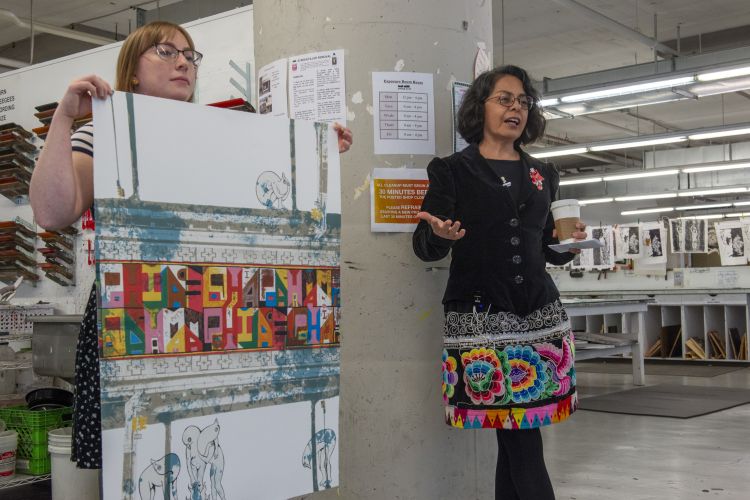STORIES FROM PAFA
Showcasing Philadelphia’s Place in the History of American Landscapes
Art is a door to history.
The artwork made during a time period often tells us about the era, whether it clues an audience into an important moment in political history, or serves as a snapshot of daily life for average people. But the story we tell from the art we know isn’t always a complete history.
From the Schuylkill to the Hudson: Landscapes of the Early American Republic, on view at PAFA this summer and fall, is an exploration of an untold story in American history.
The exhibition focuses on American landscape painting in late 18th and early 19th century, arguing that the Hudson River School came out of this time period and was inspired by artists working in Philadelphia.
“This was a very tricky period for American art in between independence and the birth of the so-called first national school, Hudson River School,” said PAFA curatorial intern Thomas Busciglio-Ritter. “People haven’t really been interested in what was done at the time and that’s strange because it’s actually very important.”
Busciglio-Ritter, a PhD student at the University of Delaware, said American art in the early 19th century is often thought of as an imitation of European art at the time. However, _Schuylkill to Hudson _argues that even in the United States’ earliest days, an American art aesthetic was emerging.
“Before Hudson River School artists became known in the 1820s and early 1830s there was already an attraction and desire for American landscapes. There were artists sketching these landscapes,” he said. “Having a major show in a major institution like PAFA is very useful so people realize that there was American landscape painting in the early 1800s, people were traveling the country already.”
From Schuylkill to Hudson is not only shining a light on a time and place that has often been left in the shadows of the Hudson River School, but also some of the artists who have been waiting for their place in American art history.
Landscape: Evening by Paul Weber is a 5 by 7 feet oil painting of an unidentified landscape painted in 1856. The painting has been in PAFA’s collection for more than 150 years but has not been exhibited in decades.
“Weber is kind of this very mysterious figure,” Busciglio-Ritter said. “He lived in Philadelphia, exhibited at PAFA, and was the teacher of many important artists at the time but we really don’t have much archival material about him.”
Thomas Cole, widely considered the founder of the Hudson River School, studied with admired artists like Thomas Birch and Thomas Doughty.
But in the tome of American art history, Cole has come to overshadow his mentors.
“Any book you pick up on American landscape painting, it will always tell you that Thomas Cole is the father of American landscape painting and everything before him is not really American art or doesn’t really count,” Busciglio-Ritter said. “But Thomas Birch was a major artist in Philadelphia at the time.”
Overlooked artists like Birch, Doughty, and Peale came first when it comes to landscape painting in the United States, but were quickly overshadowed by the next generation and have not always been remembered in American landscape history. This latest PAFA exhibition hopes to rectify that.
From Schuylkill to the Hudson: Landscapes of the Early American Republic opens June 29, 2019, and runs through December 29th.
We're so excited you're planning to visit PAFA!
Make time for art — visit us Thursday to Sunday.
Before reserving your tickets, please review helpful information about museum hours, accessibility, building access, and special admission programs.
If you have any questions, feel free to reach out to us at visitorservices@pafa.org — we’d love to help!




